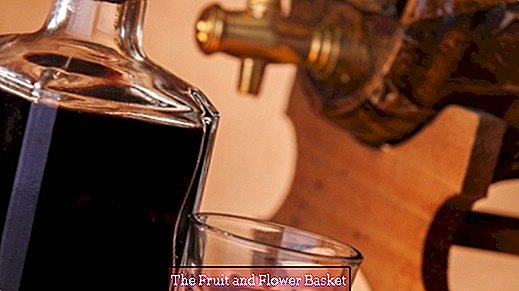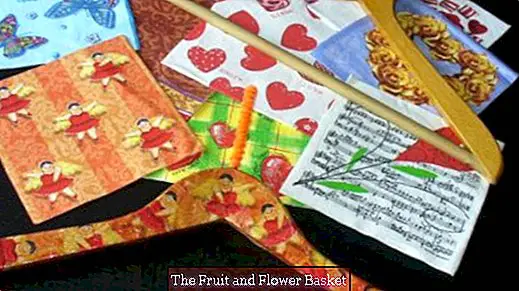Make vinegar yourself
For the salad sauce you need it, for Sauerbraten, Swabian Lentelnopf or Mix Pickles? You use vinegar, but you rarely think about it. Usually you have your usual vinegar in the cupboard, usually a wine or Branntweinessig, this may be an Italian balsamic for the rocket salad. But vinegar can be more than just sour.
What on earth is vinegar?
We define: vinegar is a seasoning and preservative, which results from the fermentation of alcohol (or sugar) containing liquids by means of acetic acid bacteria. Aha. Vinegar is one of the oldest food production processes of humanity? logically, alcoholic drinks have been around for a long time and when left to stand in the heat they became sour. Incidentally, vinegar was estimated as a refreshment in ancient times, mixed with water. In the Middle Ages, the vinegar also served as a remedy and for disinfection, and later also for beauty care. Due to the high acidity, vinegar is an excellent preservative.
One distinguishes vinegar on the one hand according to the production method as fermentation vinegar or approach vinegar or aromatized vinegar. On the other hand after the basic ingredients? so there are brandy vinegar, wine vinegar, balsamic vinegar (more on that later), rice vinegar, honey vinegar, fruit or fruit vinegar and others.
How is vinegar made?
When fermented vinegar is? simply said? an alcoholic or sugary liquid with acetic acid bacteria, the so-called vinegar nut, added and left at comfortable temperatures with plenty of oxygen in peace. In the Orléans method this happens in open kettles, which lasts and can sometimes go down in the pants. Therefore, other methods have been developed in which targeted oxygenation, wood shavings to increase the surface area and absolute hygiene play a role.
Becoming vinegar? As the name indicates ? set with flavorings. A mild wine vinegar, for example, is flavored for two weeks with fruit extracts or herbs. A good idea as a souvenir? a nice bottle, half a liter of wine vinegar and a few sprigs of rosemary!
Then there is the Billigheimer, in which simply vinegar essence, so industrially produced acetic acid, is diluted.
Then there is balsamic
Who now dreams of thick, almost sweet delights, must be careful: the word balsamic is not protected. Anything that is not on the tree can call it that. Who cares about the origins of the Italian provinces of Modena and Reggio Emilia, who buys "Aceto Balsamico di Modena". But this is just a denomination of origin and says little about the content, which was mostly industrially made from wine vinegar, some grape must or concentrated grape must, caramel, flavorings, preservatives and glycerin. The same goes for balsamic bianco, which is always made from concentrated grape must, wine vinegar and preservatives. If you want a good everyday balsamic make sure that the most important ingredient on the list of ingredients is grape must or concentrated grape must and not wine vinegar.
If tradition and first-class quality are important, then the words "Aceto Balsamico Tradizionale? respect, think highly of. A quantum leap. This balsamic is made by hand. The base is grape must of (white) Trebbiano and partly Lambruscotrauben. This is heated slowly and thickened in half. Everything cools down in an airtight container and begins to ferment. After one month, will it be transferred to another glass jar? for a total of five to seven months. Then the young vinegar is ready to slowly mature in wooden barrels. It passes through several barrels, from the top of about 60 liters, in which always comes the freshly fermented vinegar, to the smallest 10-liter barrel, from which the ripe balsamic is pulled on bottles. The smaller barrel is then always refilled from the next larger one. This barrel walk takes at least 12 years. Then the balsamic vinegar? Vecchio? If you give him 25 years, it is? extravecchio ?. In Modena, there are only these two qualities, in Reggio Emilia, there is also an 18-year-old. Years can not be found on the bottles, you can see them on the beige (vecchio) or golden (extravecchio) capsule? this is the only quality point, there are no stars or fantasy names in the original balsamic.
Balsamico costs money right. The real ones are only available in 100ml vials. But if you consider that out of 100 kg of grapes a maximum of 11 bottles of balsamic vinegar will be visible, you will see the "vinegar". for what it is: a genuine, precious delicacy. Real balsamico is not sour, but rather sweet, too bad for the Vinagrette and can also be drunk as an aperitif. Or a droplet on a piece of old Parmiggiano? delicioso!
Make vinegar yourself
If you want to flavor finished vinegar, the imagination knows no bounds. With herbs like rosemary, thyme, tarragon or fruits like raspberries? Buy a mild vinegar, place in a clean container, add to it, let stand for two weeks.Only one should note that raspberries color the vinegar nice red, but lose their own color completely. Since you have to repack before the eventual give away before and equip with new berries.
If you want to make a fermentation vinegar yourself, do you need an alcoholic beverage? for example, unsulphured wine or cider, a vinegar nut and a clean glass, earthenware or clay pot, for example a glass balloon or a large mason jar. By no means metal, the acid attacks this.
The vessel is now half filled with the base liquid? important, so that the surface is as large as possible. Add the vinegar nut, the acetic acid bacteria. You can get that on the internet or maybe in the pharmacy. It is definitely better to buy the bacteria in the beginning, just a tablespoon of commercial vinegar is not enough, because it was neatly and hygienically sterilized before sale. One calculates 100 ml vinegar nut on a liter of liquid. Now close the vessel with a cotton plug? but not airtight. Therefore, so that no pickled yeasts nest, they make a thick, furry coating on the neck, and then it is vinegar with the vinegar.
The bacteria like it warm: between 25 and 30 degrees it should already have. That's why vinegar is best used in summer. If a thin skin forms after one to two weeks and it smells like glue, everything is fine. Then you wait a few weeks, try now and then and if you think it tastes good after vinegar, fill it with filtered water in clean bottles and leave it for two to three months dark and cool in peace. And then off to the salad! By the way, if you leave a residue of the liquid in the fermentation vat and pour it back on wine, you have your own vinegar nut, which you can nurture and care for.





